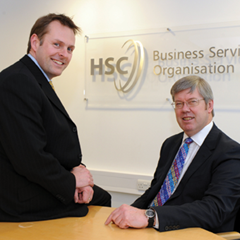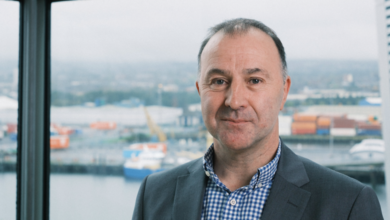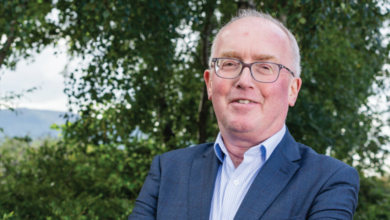BT programme fits health strategy
 The Business Services Organisation has increased efficiency by applying a BT model.
The Business Services Organisation has increased efficiency by applying a BT model.
Since 2009, the Business Services Organisation (BSO) has been responsible for providing support to Northern Ireland’s Health and Social Care service (HSCNI).
Central to its remits is delivering services in the most economic way, an objective that has been increasingly challenging in the face of budget cuts and austerity measures.
The changing economic climate led the BSO to conduct an urgent review of all its spending. The goal was to find a model that could be applied to an 800-strong organisation with diverse responsibilities that range from facilities management and business process to IT and telephony.
“Our business is about delivering back office services at a time when there are big challenges around streamlining and providing greater efficiency,” said Karen O’Loan, Director of Customer Care and Performance at BSO. “We were struggling to get a focus on how we would approach cost reduction on such a large scale.”
After attending a BT event, the pieces fell into place. “We were a BT customer and went along to hear how the company had embarked on a massive cost reduction programme. We could see lots of similarities with what we were trying to do,” said O’Loan.
Impacted by the global financial crisis between 2008 and 2010, BT
undertook a company-wide rationalisation programme that saw it successfully transform its multi-national business. This transformational programme was built around the concept of “cutting costs while improving services”.
Using the BT approach to cost improvement, BSO was asked to highlight areas where it thought that efficiencies could be made. At the same time, senior management identified opportunities for improvements in contract costs and potential areas for increased income generation.
Benefits
Having ruled out the use of external consultants who were prohibitively expensive, the BSO team set about transposing the BT cost improvement programme onto its own services in what became known as the TOP (Transforming Organisational Performance) programme.
The five-step plan exactly mirrored the BT model:
1. Impose discipline i.e constrain travel and discretionary spend, halt purchasing, centralise decision-making, introduce new business rules and freeze recruitment;
2. Rationalise the supply chain by bringing ad hoc spending under control and under contract, and review scope, usage and cost of selected current contracts;
3. Drive tactical efficiency, engage everyone and assist senior managers to review business processes and cost drivers;
4. Redesign the operating model and rethink how the organisation needs to work. Simplify processes and focus on getting services right first time, and review organisational structure to ensure fitness for purpose;
5. Modernise processes and automate as far as possible, enable customer self-service and minimise the manual handling of information.
A governance structure was established to manage the steps along and guiding principles put in place that emphasised engagement and regular feedback.
Though it’s still early days, BSO is on target to reduce the overall goods and services spend by 11-12 per cent and it’s starting to identify new opportunities for income.
Postage and courier services, for example were reduced considerably through increased use of electronic communications. Similarly, the use of web and video conferencing technology has cut travel expenses by 11 per cent.
Marrying the BT programme to the TOP agenda has proved to be perfect strategic fit for BSO and HSCNI. “At the end of the day, our mission is to deliver value for money and high quality business services to Health and Social Care, contributing to the health and well being of the population,” said O’Loan. “With the help of the BT programme we are now able to achieve our goals more efficiently.”
BT was delighted to share the experiences of its own five-year cost transformation programme. "It was obvious that the public sector was facing some considerable challenges in terms of the reacting to the new financial climate and BT was pleased to be able to assist with the knowledge and experience of going through something very similar,” said BT Health Director Mark Hopkins. “We have run several workshops and seminars for our public sector customers to provide our views and experience. We are delighted that it has proven valuable to BSO and the broader public sector.”






